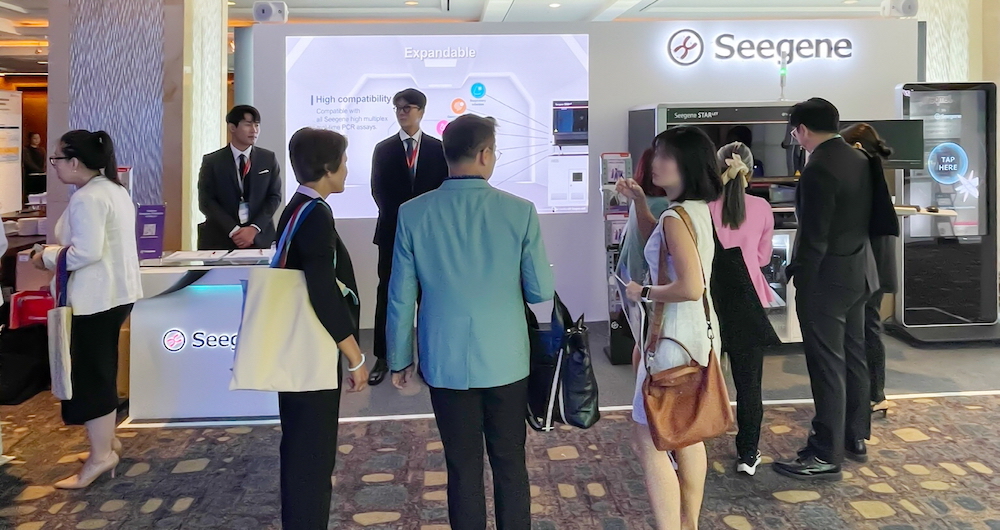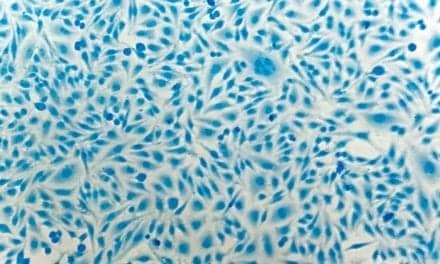Summary: Seegene demonstrated its new HPV diagnostic products and emphasized the importance of HPV screening at the AOGIN conference in Seoul, South Korea.
Takeaways:
- Advanced Diagnostic Technology: Seegene showcased its Allplex HPV HR Detection and Allplex HPV28 Detection products, which utilize quantitative PCR technology to identify high-risk HPV types linked to cervical cancer in a single or double-tube format.
- Symposium and Presentations: The company hosted a symposium featuring experts discussing clinical validation and population-based screening, underlining the clinical significance of incorporating HPV genotyping into screening programs.
- Global Awareness Campaign: Seegene is actively promoting the benefits of syndromic PCR testing for simultaneous detection of HPV and other STIs, aiming to enhance global adoption and improve cervical cancer screening rates.
Seegene Inc., a South Korea-based company providing a total solution for PCR molecular diagnostics, demonstrated its human papillomavirus (HPV) diagnostic products and underscored the critical importance of HPV screening test at the Asia-Oceania Research Organization in Genital Infection and Neoplasia (AOGIN) conference, held in Seoul, South Korea from July 11-13.
At the AOGIN, Seegene presented its advanced technologies for identifying viruses linked to cervical cancer. The company organized an exhibition booth and hosted a symposium session under the theme of ‘Navigating clinical guidelines and implementations for HPV cervical cancer screening.’
HPV Diagnostic Products
The company showcased its unique quantitative PCR technology-based HPV diagnostic products, ‘Allplex HPV HR Detection’ and ‘Allplex HPV28 Detection’. The Allplex HPV HR Detection is designed to test for 14 high-risk HPVs, including types 16 and 18, in a single tube. The Allplex HPV28 Detection is designed to test for 28 HPVs, in two tubes, including 19 high-risk types and 9 low-risk types, in two tubes. The products are ideal for cervical cancer prevention and follow-up management.
The company also introduced Seegene’s STARlet-AIOS, a fully automated molecular diagnostic testing system that streamlines the entire PCR process from nucleic acid extraction to result analysis, along with SG STATS, the company’s premium platform of advanced statistical analysis.
At the symposium session hosted by Seegene on July 11, Lan Xu, MSc, PhD, from the Shanghai Jiao Tong University of Public Health in China presented a lecture on “Clinical validation of human papillomavirus assays for cervical cancer screening via the VALGENT framework.” Shin-Wha Lee, MD, PhD, from the Asan Medical Center and University of Ulsan in Korea showed her study on “Incorporating HPV testing with genotypes in population-based screening programs.”
“At AOGIN, we were able to showcase the excellence of Seegene’s PCR testing technology and HPV products. We expect our HPV products to be adopted in cervical cancer screening programs in more countries,” says Daniel Shin, executive VP and chief global sales and marketing officer at Seegene. “We are currently operating a campaign in the global market to raise awareness about the benefits of syndromic PCR testing, including simultaneous testing for HPV and sexually transmitted infections (STIs). We believe the campaign will pave the way for the widespread adoption of syndromic PCR testing, helping to realize “a world free from all diseases.”
Seegene’s PCR Tech
Seegene’s syndromic quantitative PCR technology is simultaneous multiplex molecular diagnostic technology based on real-time PCR. It allows for the detection of various pathogens causing similar symptoms in a single tube, facilitating fast and accurate diagnosis, the company says. Furthermore, analyzing the cycle threshold (Ct) value helps determine the extent of the infection, which enhances medical practice. Seegene is the first to globally commercialize ‘3 Ct’ technology, which can provide the Ct value of three targets in one channel.
Scope of Cervical Cancer
Cervical cancer is the fourth most common cancer among women worldwide, with the second-highest mortality rate. According to the World Health Organization (WHO), approximately 600,000 women are newly diagnosed with cervical cancer each year globally, resulting in 340,000 deaths. In the Asia-Pacific region alone, about 270,000 women are diagnosed annually, with over 140,000 deaths reported. The WHO has set a target to achieve 70% cervical cancer screening coverage by 2030, a significant increase from the current 20%. In 2020, only 33% of women had been screened for cervical cancer at least once.
There are about 200 HPV genotypes, of which 99.8% of cervical cancers are caused by HPV. Types 16 and 18 account for 70% of cervical cancer, while 19 high-risk types are responsible for 90% of all cancer cases. The progression to cancer depends on the genotype of the HPV infection, the extent of the infection and co-infection. Since most HPV infections do not present clear symptoms, accurate detection is critical for the early diagnosis of cervical cancer. Recently, many countries have been recommending HPV testing instead of the Pap smear for cervical cancer screening.
Further reading: Seegene Obtains ISO45001 Certification
Featured image: Seegene exhibits its booth and demonstrates the HPV diagnostic products with STARlet-AIOS at AOGIN 2024 on Thursday, July 11-13, 2024. Photo: Seegene





